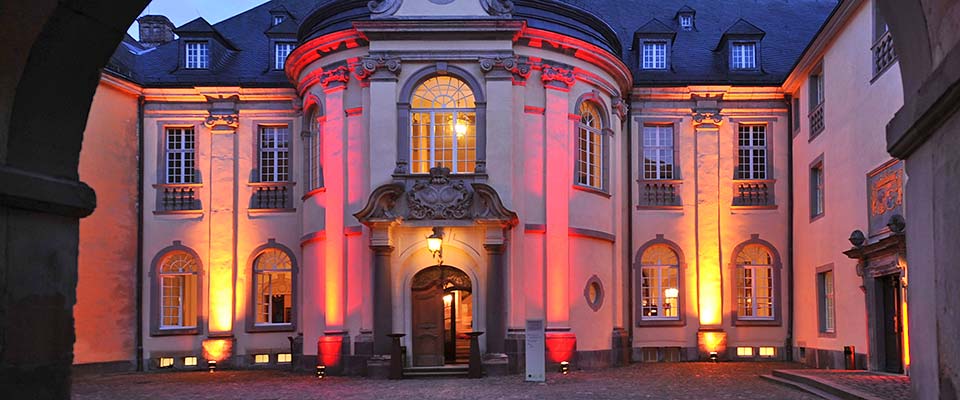In terms of cultural history, Schloss Dyck is one of the most important moated castles in the Rhineland. With its baileys and access yard, it is spread over four islands in the area of a stream called Kelzenberger Bach and is surrounded by a picturesque English landscape garden. Its history has been documented since 1094, when “Hermannus de Dicco” was mentioned in a document of the Archbishop of Cologne. He was the lord of a simple fortification on marshy ground. The following generations developed the seat into a fortified moated castle, and the surrounding villages were integrated into the area of rule.
Two aspects are noteworthy from an historical perspective. Firstly, the estate remained continuously in the possession of the Salm-Reifferscheidt-Dyck family for more than 900 years before it became a Centre for Garden Design and Landscape Culture upon the establishment of a foundation in 1999. Secondly, it was able to maintain its autonomy between the centres of power of the Electorate of Cologne, Jülich and Guelders over several centuries. The small territory – commonly known as “Dycker Ländchen” (little country of Dyck– is recognisable to this day as a unique piece of cultural landscape.
When the castle was given its present appearance, chivalry and the Middle Ages with their numerous armed conflicts belonged to the past. Its 17th century owners created an impressive, early Baroque residence. A new barn was built in 1647 and the stable yard, guard room and brewery house were rebuilt six years later. From 1656 until 1667, Count Salentin had the main castle enhanced to create a complex with four wings. It became a venue for the fine society of those days.
In the late 18th century, Dyck advanced to become a Rococo residence of the highest quality. Finest wallpapers and exquisite furniture were part of the interior. Today, some rooms in the east wing are open to the public as a museum. They form a window into the past – and into the future: the establishment of the foundation saw the beginning of extensive restoration of the entire complex and a contemporary reorientation of its content.
